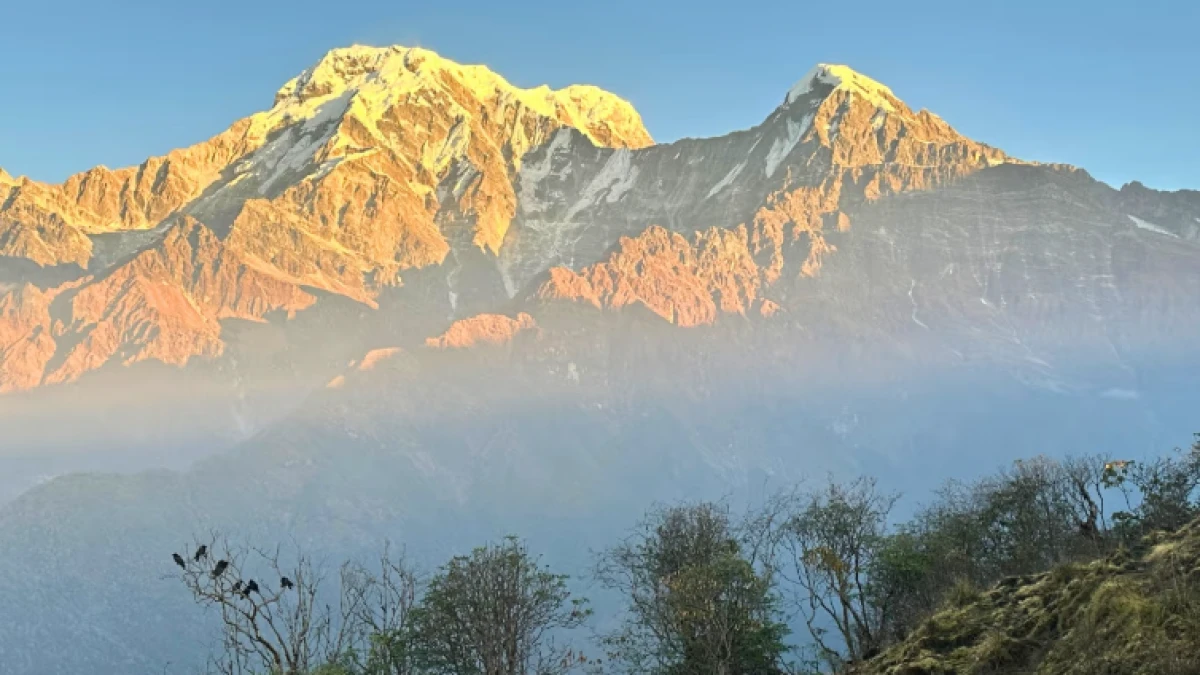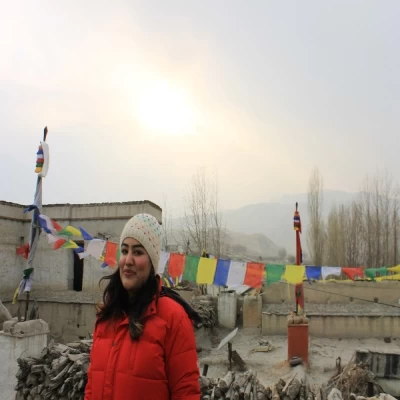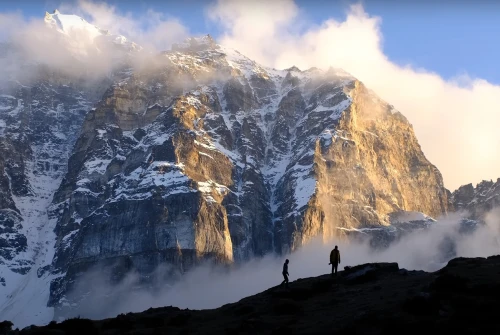Introduction to Mardi Himal Trek
We present the Mardi Himal Trek, one of Nepal's most spectacular yet relatively undiscovered trekking routes that offers breathtaking mountain panoramas, pristine rhododendron forests, and authentic cultural encounters. Located in the Annapurna region, this trek provides an exceptional alternative to the more crowded trails while delivering equally stunning views of the Himalayan giants, including Annapurna South, Hiunchuli, Machhapuchhre (Fishtail), and Mardi Himal itself.
The Mardi Himal Trek typically spans seven to ten days, depending on your itinerary preferences and acclimatization needs. We have crafted this comprehensive guide to help you understand every aspect of this remarkable journey, from the detailed day-by-day itinerary to essential preparation tips.
Mardi Himal Trek Highlights
- Close-up views of Machhapuchhre (Fishtail), Annapurna South, Hiunchuli & Mardi Himal
- Peaceful, less-crowded alternative to other Annapurna region treks
- Charming teahouse accommodation with authentic Nepali hospitality
- Rich rhododendron forests and wildlife along the trail
- Ridge-line trekking with incredible sunrise and sunset viewpoints
- Short but rewarding trek suitable for beginners
- Accessible from Pokhara with easy transportation
- High success rate and gradual acclimatization
Detailed Mardi Himal Trek Itinerary
Day 1: Arrival in Kathmandu (1,400m) - Gateway to Your Adventure
Upon your arrival at Tribhuvan International Airport, we arrange for your seamless transfer to your carefully selected hotel in the heart of Kathmandu. The bustling capital city serves as the perfect introduction to Nepal's rich cultural tapestry. After settling into your accommodation, we recommend exploring the vibrant streets of Thamel, where ancient traditions blend seamlessly with modern tourism infrastructure.
The neighborhood offers an excellent opportunity to browse trekking equipment stores, sample authentic Nepali cuisine at local restaurants, and visit nearby cultural landmarks. We suggest using this day to acclimate to the altitude, purchase any last-minute trekking essentials, and attend our comprehensive pre-trek briefing where we cover route details, safety protocols, and what to expect in the coming days.
Day 2: Journey to Pokhara (820m) - The Adventure Begins
We embark on our journey to Pokhara, Nepal's adventure capital, offering two transportation options based on your preferences. The scenic drive takes approximately 6-7 hours along winding mountain roads, providing spectacular views of terraced hillsides, rushing rivers, and traditional villages. Alternatively, we arrange a 25-minute domestic flight that offers stunning aerial perspectives of the Himalayas.
Upon reaching Pokhara, nestled beside the tranquil Phewa Lake with the Annapurna range as its backdrop, we check into our lakeside hotel. The afternoon allows time to explore the colorful streets, visit the International Mountain Museum, or simply relax by the lake while preparing mentally for the trek ahead. We conduct a thorough gear check and final preparations for our mountain adventure.
Day 3: Drive to Kande and Trek to Deurali (2,100m) - First Steps into the Mountains
Our trekking adventure truly begins with a short drive from Pokhara to Kande (1,770m), taking approximately 1.5 hours. From this starting point, we begin our ascent through lush rhododendron forests and traditional Gurung villages. The trail gradually climbs through dense woodland, offering occasional glimpses of the surrounding peaks.
The path winds through Australian Camp, a popular viewpoint offering panoramic vistas of the Annapurna range, Dhaulagiri, and Manaslu. We continue ascending through forest trails adorned with colorful prayer flags, eventually reaching Deurali, our first mountain lodge. The evening presents opportunities to witness a spectacular sunset over the Himalayas while enjoying traditional dal bhat prepared by our lodge hosts.
Day 4: Trek from Deurali to Low Camp (2,970m) - Entering the Alpine Zone
Today's trek takes us deeper into the Annapurna Conservation Area, where the landscape transforms dramatically. We follow a well-maintained trail that gradually ascends through magnificent forests of oak, hemlock, and rhododendron. The path becomes steeper as we climb higher, with the vegetation transitioning from subtropical to alpine environments.
As we gain elevation, the views become increasingly spectacular, with Machhapuchhre (Fishtail Mountain) dominating the skyline. The trail passes through small clearings offering rest spots with breathtaking mountain panoramas. Upon reaching Low Camp, situated in a beautiful high-altitude meadow, we experience the true essence of Himalayan trekking. The temperature drops noticeably, and we spend the evening acclimatizing while enjoying warm meals and the camaraderie of fellow trekkers.
Day 5: Trek from Low Camp to High Camp (3,580m) - Above the Treeline
This challenging yet rewarding day takes us above the treeline into the true alpine environment. The trail becomes steeper and more exposed as we leave the protective cover of forests behind. We traverse through high-altitude pastures where yaks graze during summer months, with increasingly dramatic views of the surrounding peaks.
The landscape transforms into a stark, beautiful wilderness of rock, grass, and snow. Mardi Himal and Machhapuchhre appear impossibly close, their massive walls towering above us. We arrive at High Camp in the afternoon, positioned on a spectacular ridge with 360-degree mountain views. The thin air at this altitude requires us to move slowly and deliberately, staying well-hydrated and monitoring for any altitude-related symptoms.
Day 6: Summit Day - Mardi Himal Base Camp (4,500m) and Return to Low Camp (2,970m)
We begin our summit day before dawn, typically departing around 4:00 AM to reach the base camp for sunrise. The pre-dawn trek requires headlamps as we carefully navigate the rocky trail climbing toward our ultimate destination. The path becomes increasingly steep and challenging, but our careful acclimatization makes this ascent manageable.
Reaching Mardi Himal Base Camp (4,500m) at sunrise ranks among the most spectacular moments in Himalayan trekking. The panoramic views encompass Annapurna South, Hiunchuli, Gangapurna, Annapurna I, and the magnificent Machhapuchhre. We spend time at the base camp photographing, celebrating our achievement, and absorbing the magnificent scenery.
After approximately one hour at the summit, we begin our careful descent back to High Camp for breakfast, then continue downward to Low Camp for the night. The long descent requires concentration and proper technique to protect our knees, but the spectacular views make every step worthwhile.
Day 7: Trek to Siding Village (1,750m) and Drive to Pokhara (820m) - Descent to Civilization
Our final trekking day involves a long but pleasant descent through varied landscapes. We leave the alpine environment behind, re-entering the beautiful rhododendron and oak forests that characterize the lower elevations. The trail passes through traditional Gurung villages where we observe local agricultural practices and traditional architecture.
We reach Siding Village, a charming settlement where our vehicle awaits. After bidding farewell to our trekking crew, we drive back to Pokhara, arriving in the late afternoon. The contrast between mountain simplicity and lakeside comfort feels remarkable as we check into our hotel. The evening offers opportunities for a celebratory dinner, shopping for souvenirs, or enjoying a well-deserved massage.r
Day 8: Return to Kathmandu - Journey's End Approaches
We retrace our route to Kathmandu, choosing between the scenic overland journey or the convenient flight option. The return to the capital provides time for reflection on the incredible experiences of the past week. Upon arrival in Kathmandu, we transfer to your hotel where the remainder of the day remains free for personal activities.
Many trekkers choose to explore Kathmandu's UNESCO World Heritage Sites, including Swayambhunath (Monkey Temple), Pashupatinath Temple, or Boudhanath Stupa. Others prefer shopping for traditional handicrafts, Tibetan singing bowls, or pashmina shawls in the bustling markets. We organize a farewell dinner featuring traditional Nepali cuisine and cultural performances to celebrate the successful completion of your trek.
Day 9: Departure Day - Farewell to Nepal
Our team ensures your timely transfer to Tribhuvan International Airport for your departure flight. We provide assistance with airport procedures and bid you farewell, hoping that your Mardi Himal adventure has created lasting memories. Many trekkers find themselves already planning their return to Nepal's magnificent mountains before their flight even departs.
Best Season for Mardi Himal Trek
We recommend trekking the Mardi Himal trail during two primary seasons for optimal conditions. The autumn season (September to November) offers crystal-clear skies, stable weather, and excellent visibility, making it the most popular trekking period. Temperatures are comfortable, and the post-monsoon atmosphere provides stunning mountain clarity.
The spring season (March to May) presents equally favorable conditions with the added bonus of blooming rhododendrons that paint the forests in vibrant reds, pinks, and whites. Temperatures gradually warm, and the days are generally sunny with occasional afternoon clouds.
We advise against trekking during the monsoon season (June to August) due to heavy rainfall, leeches, obscured mountain views, and increased landslide risks. The winter months (December to February) present challenges, including snow at higher elevations, extremely cold temperatures, and potential trail closures, though experienced winter trekkers may find this season rewarding.
Physical Fitness and Preparation Requirements
We emphasize that the Mardi Himal Trek requires a moderate level of physical fitness. While not as demanding as high-altitude expeditions, this trek involves consecutive days of hiking, significant elevation gain, and nights spent at altitudes up to 3,600 meters. We recommend preparing your body through regular cardiovascular exercise, hiking with a weighted backpack, and building leg strength through activities like stair climbing, cycling, or running.
We suggest beginning your training regimen at least two months before your departure. Focus on building endurance rather than speed, as the trek requires sustained effort over multiple days. Previous trekking experience, while beneficial, is not essential if you arrive with adequate fitness and a positive mental attitude.
Essential Permits and Documentation
We handle the acquisition of necessary permits for the Mardi Himal Trek, which include the Annapurna Conservation Area Permit (ACAP) and the Trekkers' Information Management System (TIMS) card. These permits support conservation efforts in the region and ensure trekker safety through registration systems. We require photocopies of your passport and passport-sized photographs for permit processing.
Accommodation and Meals Along the Trail
We arrange accommodations in comfortable teahouses throughout the trek, providing basic yet adequate facilities, including beds with blankets, shared bathrooms, and common dining areas. The teahouses become more basic as we ascend to higher elevations, but they offer warmth, shelter, and authentic cultural experiences. We recommend bringing a sleeping bag for added warmth and comfort.
We provide three meals daily during the trek, featuring a combination of traditional Nepali cuisine (dal bhat, momos, thukpa) and international options (pasta, pizza, pancakes). The food is freshly prepared, nutritious, and designed to fuel your daily trekking efforts. We always encourage proper hydration and offer guidance on safe drinking water practices.
Altitude Considerations and Acclimatization
We structure our Mardi Himal itinerary with gradual elevation gains to minimize altitude-related issues. While the maximum altitude (4,500m at Base Camp) is lower than many Himalayan treks, we remain vigilant about Acute Mountain Sickness (AMS) symptoms. We educate all trekkers about recognizing symptoms, including headaches, nausea, dizziness, and fatigue.
We implement the golden rule of altitude trekking: "climb high, sleep low" whenever possible. Our guides monitor trekkers' conditions daily and adjust plans if anyone shows concerning symptoms. We carry comprehensive first aid kits and maintain communication equipment for emergency situations.
What to Pack for Mardi Himal Trek
We provide a comprehensive packing list to ensure you bring appropriate gear without over-packing. Essential items include layered clothing for varying temperatures, a quality waterproof jacket, warm insulation layers, comfortable trekking boots, trekking poles, a sleeping bag rated for -10°C, sunscreen, sunglasses, a headlamp, personal medications, and a water purification method.
We emphasize packing light, as you will carry your daypack containing items needed during daily hikes. Porter services are available for main luggage, allowing you to trek comfortably with only essentials. We recommend bringing a duffel bag for porter-carried items and a comfortable daypack (20-30 liters) for personal use during trekking hours.
Cultural Highlights and Local Communities
We encounter primarily Gurung communities along the Mardi Himal route, offering authentic insights into traditional mountain lifestyles. The Gurung people, renowned for their bravery and contributions to Gurkha regiments, welcome trekkers with genuine warmth and hospitality. We have opportunities to observe traditional architecture, sample local cuisine, and learn about Buddhist and Hindu practices that coexist harmoniously in these villages.
We encourage respectful interaction with local communities, photography with permission, and supporting the local economy through fair purchases of handicrafts and services. These cultural exchanges enrich the trekking experience beyond the physical and visual rewards.
Wildlife and Natural Environment
We trek through the Annapurna Conservation Area, home to diverse flora and fauna. While wildlife sightings are unpredictable, the region supports species including Himalayan tahr, musk deer, leopards, and numerous bird species including the colorful Danphe (Himalayan Monal), Nepal's national bird. The varied vegetation zones from subtropical forests to alpine meadows create rich biodiversity that changes dramatically as we gain elevation.
We practice responsible trekking by staying on designated trails, carrying out all waste, avoiding single-use plastics, and respecting wildlife habitats. Our commitment to sustainable tourism helps preserve this pristine environment for future generations.
Why Choose Mardi Himal Trek
We recommend the Mardi Himal Trek for travelers seeking an authentic Himalayan experience without the crowds found on more established routes. This relatively new trail offers spectacular mountain vistas comparable to longer, more strenuous treks while requiring less time commitment. The combination of natural beauty, cultural encounters, physical challenge, and accessibility makes this trek ideal for both first-time Himalayan trekkers and experienced adventurers seeking new destinations.
The trail's unique character emerges from its isolation, pristine forests, intimate mountain perspectives, and the sense of discovery that comes from exploring a less-traveled path. We witness sunrise illuminating the Annapurna massif, walk through magical rhododendron forests, and stand beneath some of Earth's highest peaks, all within a reasonable timeframe and moderate difficulty level.
Conclusion
We have designed this comprehensive Mardi Himal Trek itinerary to provide you with all the necessary information for planning your Himalayan adventure. This extraordinary trek delivers unforgettable experiences, from the bustling streets of Kathmandu to the serene heights of Mardi Himal Base Camp. We combine professional guidance, careful planning, and deep respect for the natural and cultural environments to ensure your journey is safe, comfortable, and truly memorable.
The Mardi Himal Trek represents the perfect balance of challenge and reward, offering spectacular mountain scenery, cultural immersion, and personal achievement. We look forward to guiding you through this remarkable corner of the Himalayas, creating memories that will inspire you long after you've returned home.



 based on 1 review
based on 1 review

.webp)

